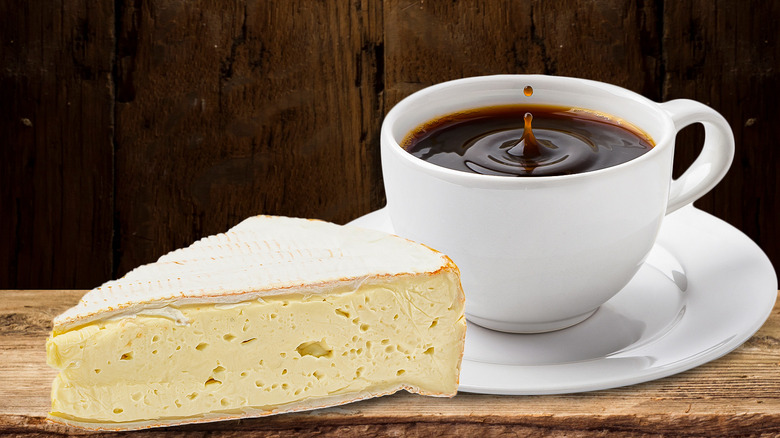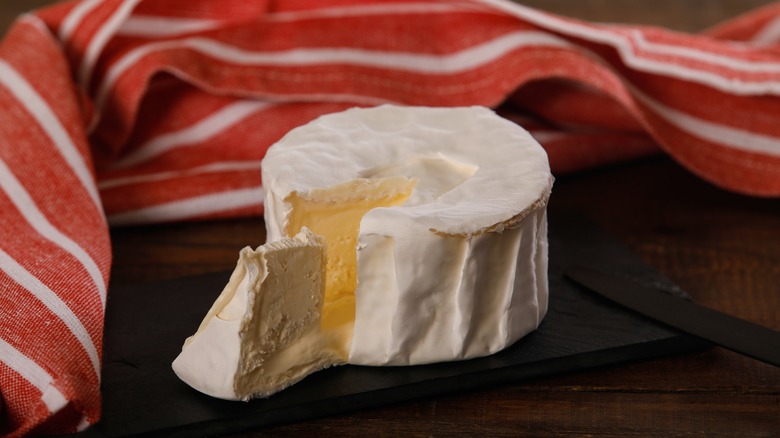The Best Type Of Cheese To Pair With Coffee
A cup of coffee in the morning can get your day started on a positive note, but why not make it even better with a side of delicious cheese? If you're looking for that little extra something to turn your Monday blues into a morning snack fit for the royal family, cheese and coffee may just be the perfect fit. To help us figure out what cheese pairs best with coffee, we reached out to Laura Downey, cheesemonger and owner of Fairfield & Greenwich Cheese Company in Connecticut.
"I like the idea of a mild, milky cheese paired with coffee, like a triple créme," Downey told us. "Triple créme has an ice cream-like quality and softens the boldness and bitterness of the coffee." Is it a tad decadent for a morning routine? Absolutely, but that shouldn't stop you from enjoying the finer things in life. Downey said, "My best recommendation would be St. Stephen from Four Fat Fowl in New York."
What is a triple créme cheese?
The reason triple créme cheeses go so well with coffee is for the same reason we put creamer into our coffee. As Downey mentioned, black coffee has a strong bitter taste that some people really enjoy but many prefer softened somewhat. Adding a rich cream like half-and-half can do it, but biting into a velvety triple créme can work just as well.
Triple créme cheeses were born out of 19th century France in an age of opulence and excess and was designed for the upper classes looking for luxury dairy products. The title of triple créme belongs to a family of cheeses, not a specific type of cheese. Triple créme cheeses are incredibly soft and fatty. For reference, brie can be a double cream or a triple cream cheese.
Take the 60% fat content of a typical brie and add another helping of cream for a 75% fat content cheese, and you've got triple créme. Worth noting that the 75% fat content is without taking water into consideration. In their final form, triple créme cheeses are around 40% fat. Similar to a typical brie, triple créme cheeses have a bloomy rind, which is the edible white exterior that gives brie its iconic look. Within this happy family, you have the buttery beauty known as Brillat-Savarin, the iconic Saint-André named after the French town of Saint-André-sur-Orne, and don't forget the thin-rind beauty of Boursault.

